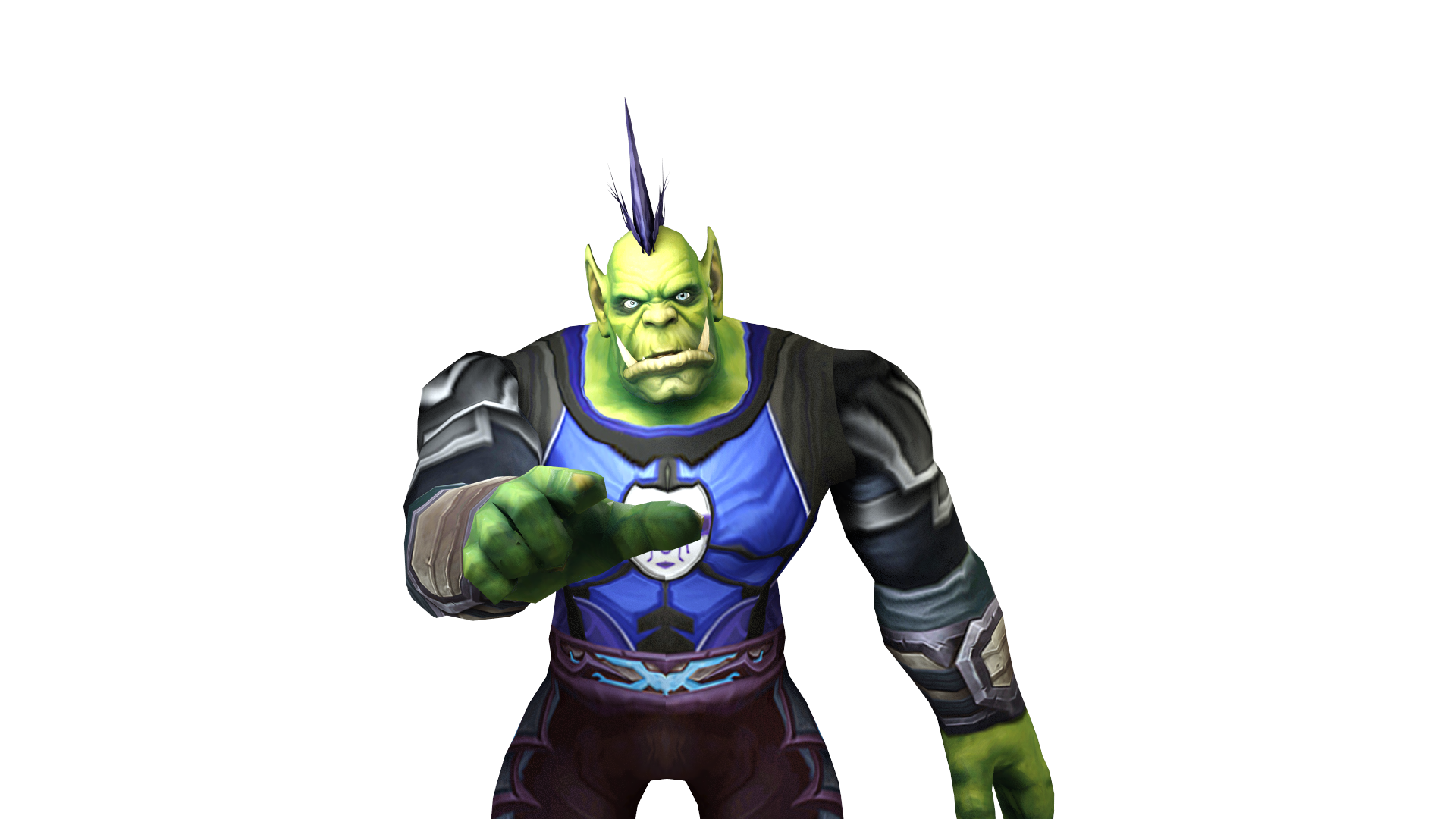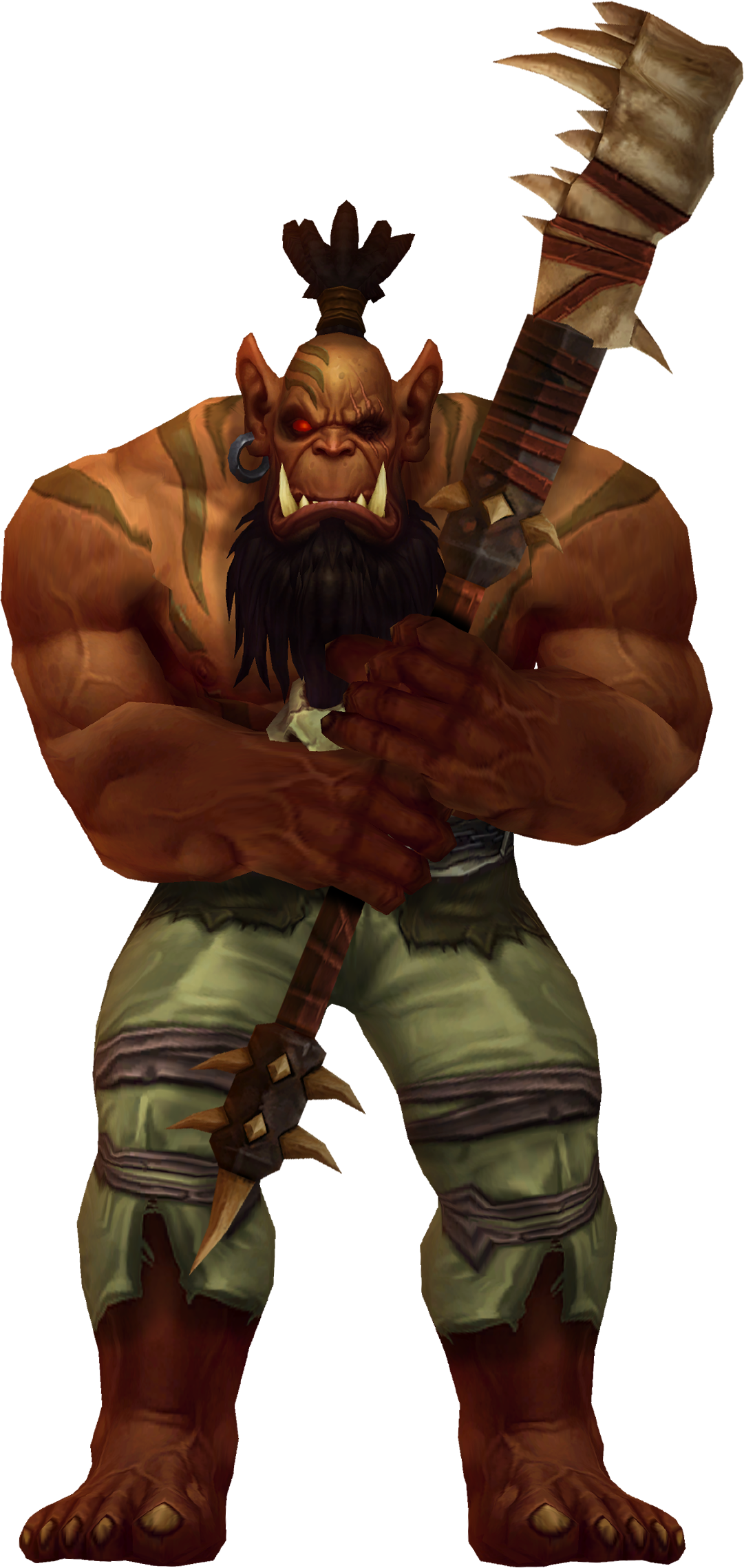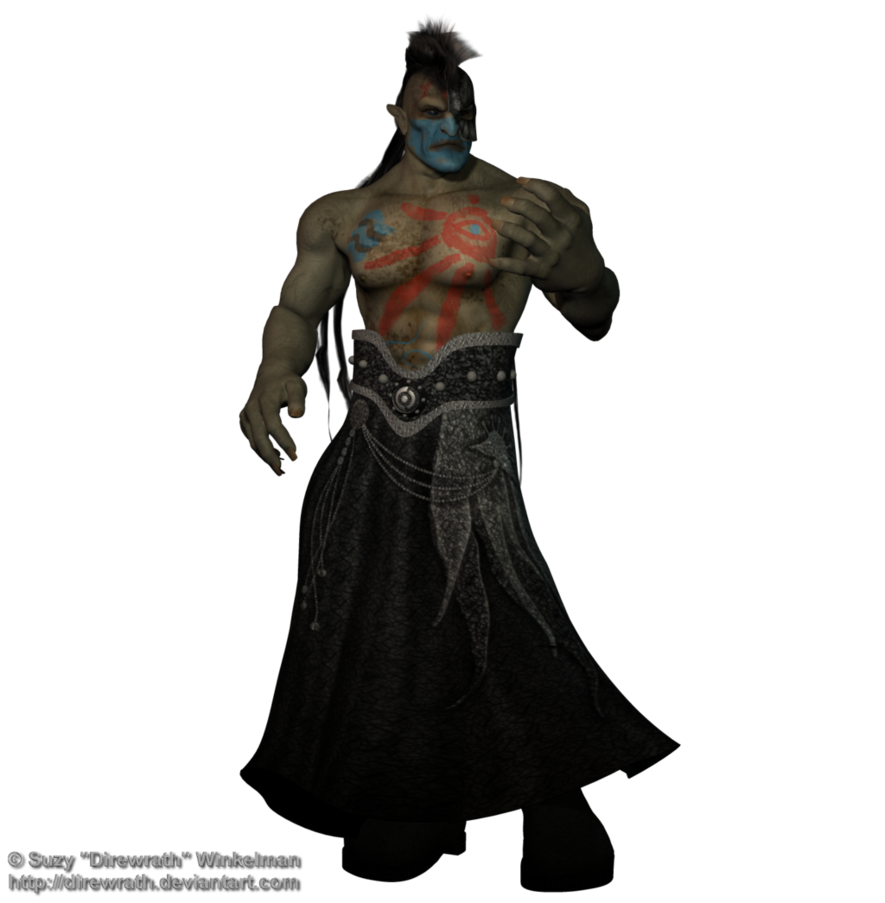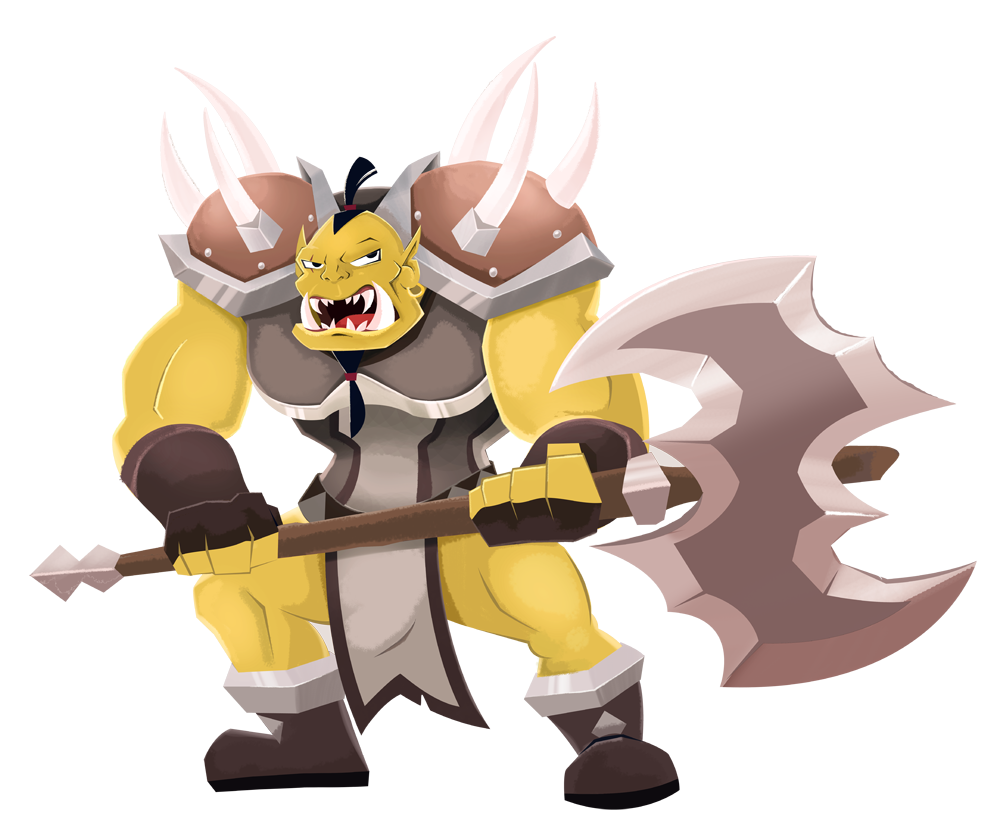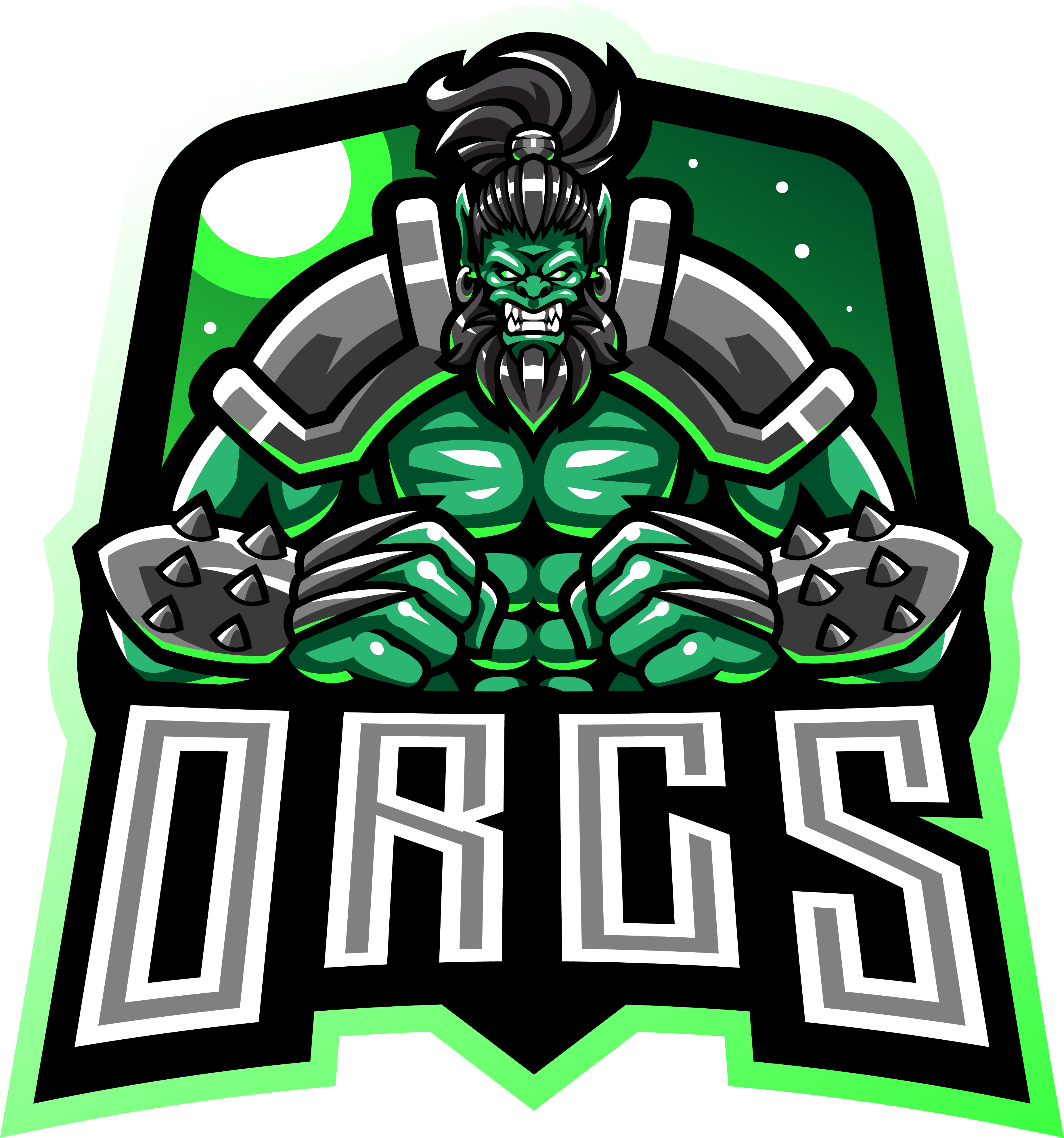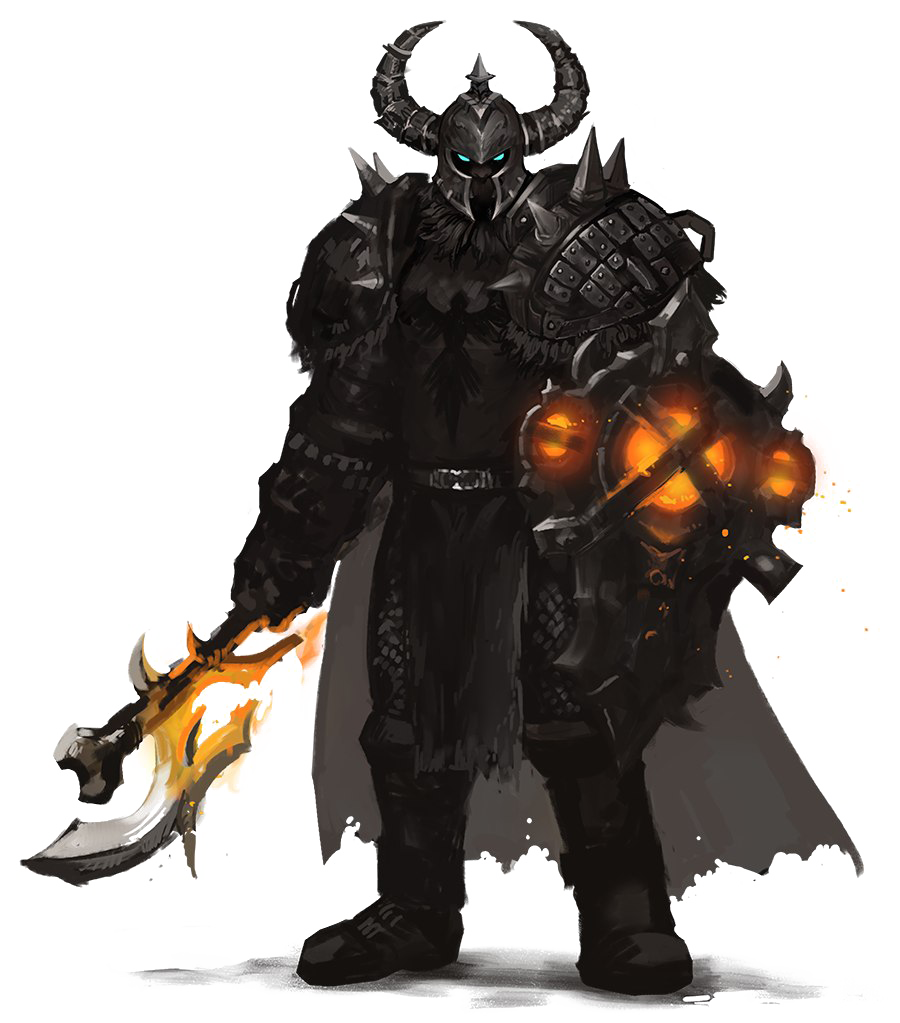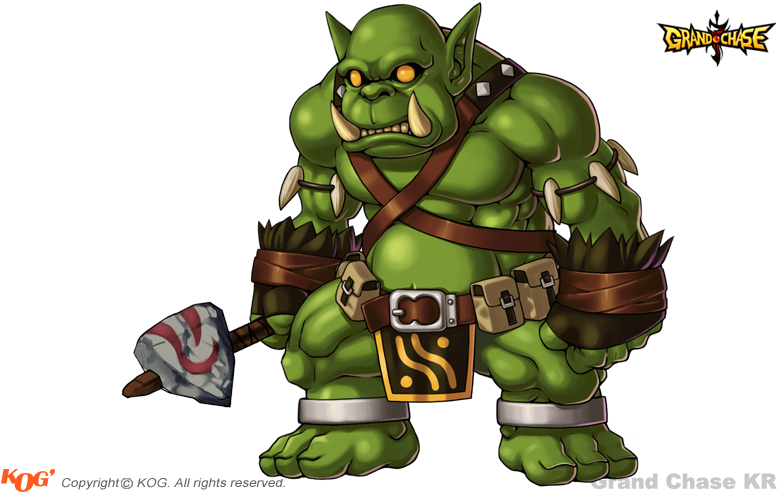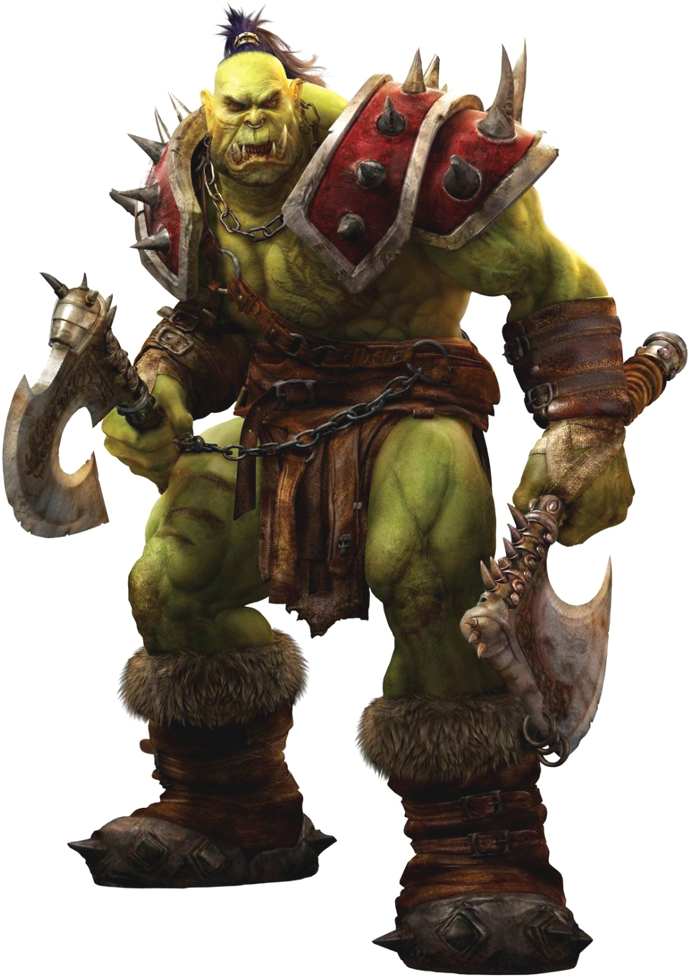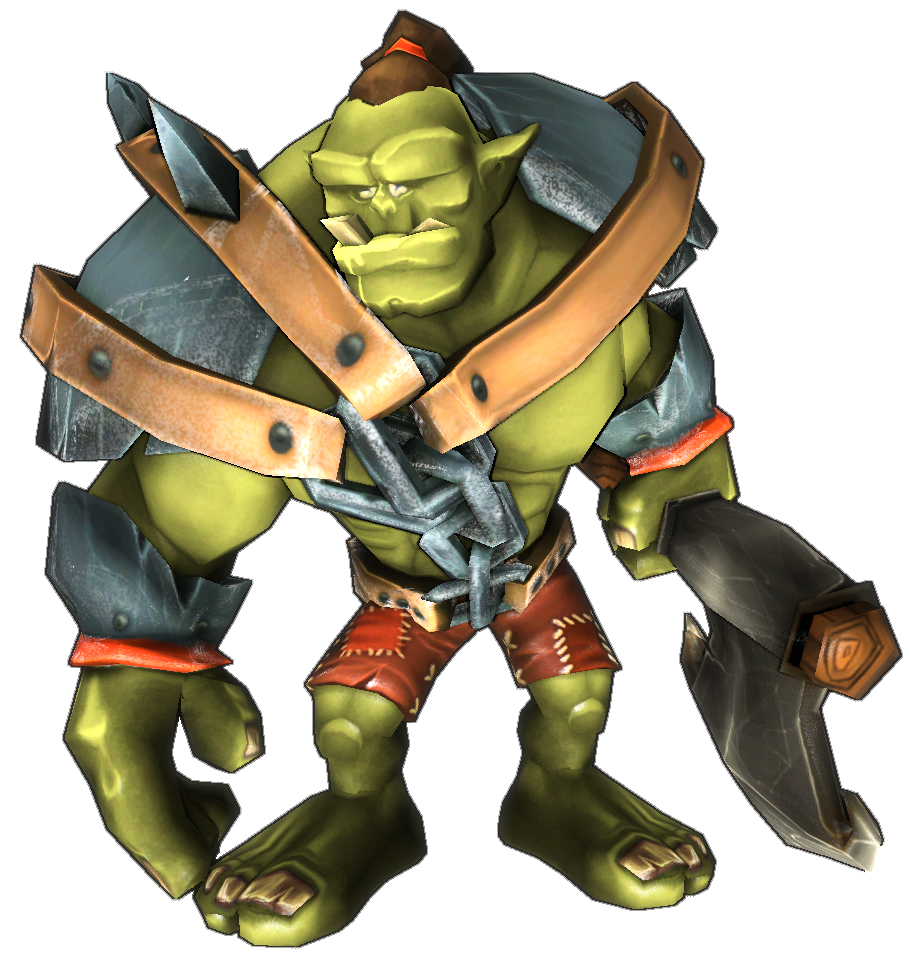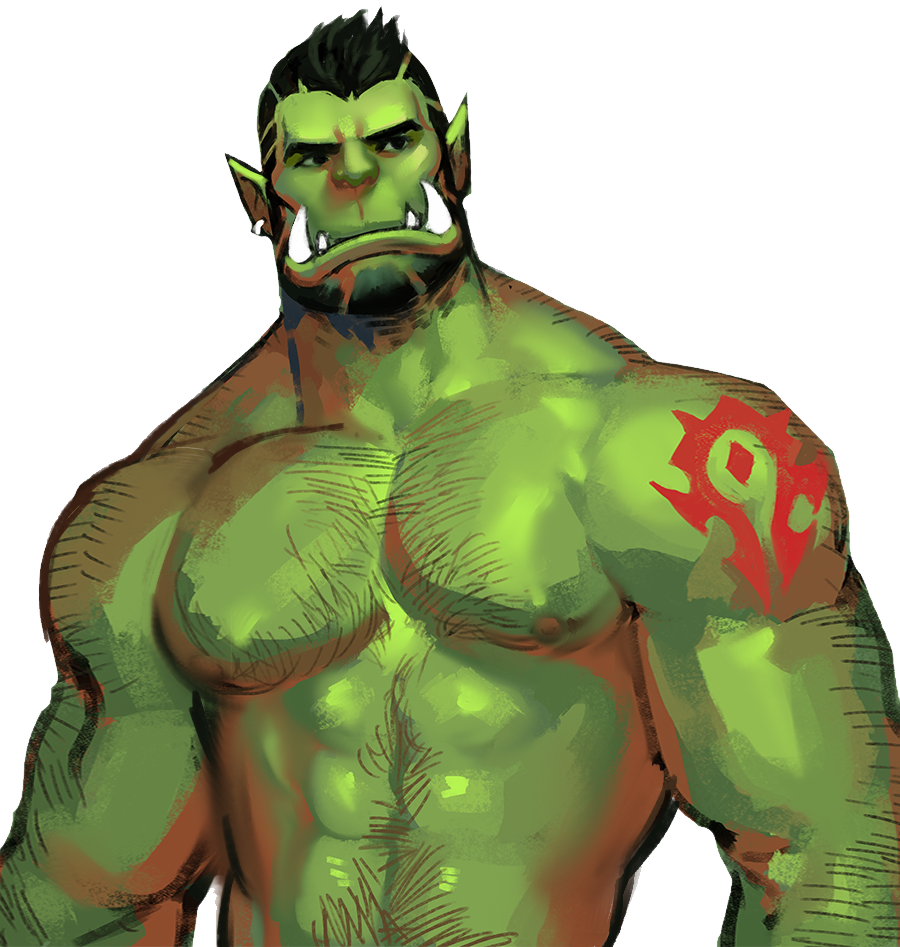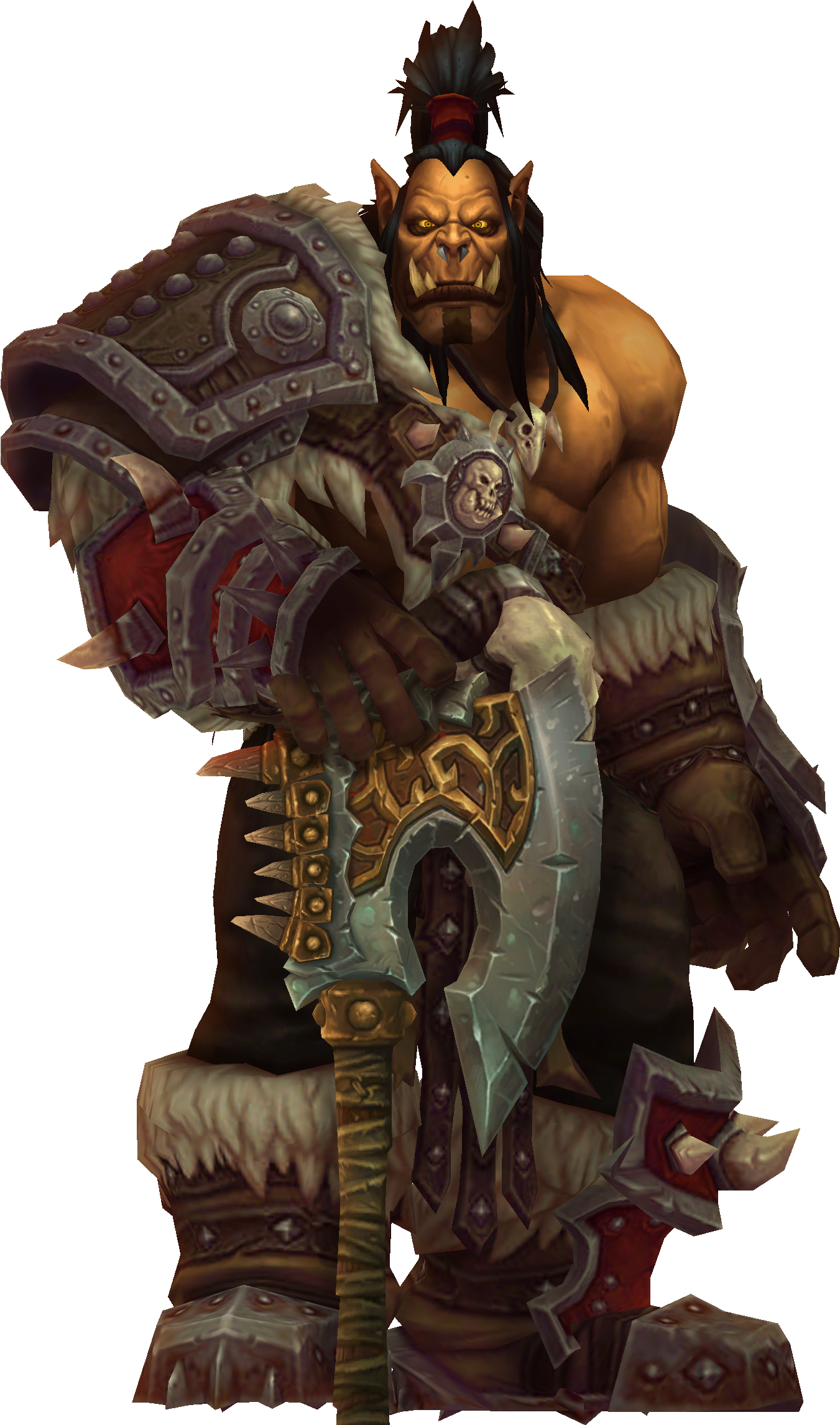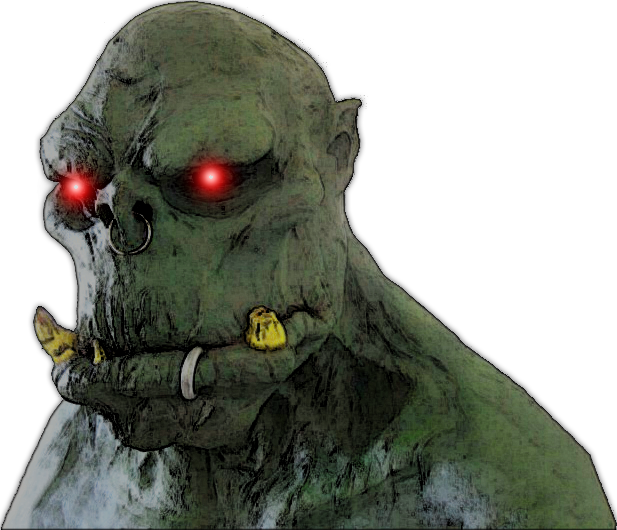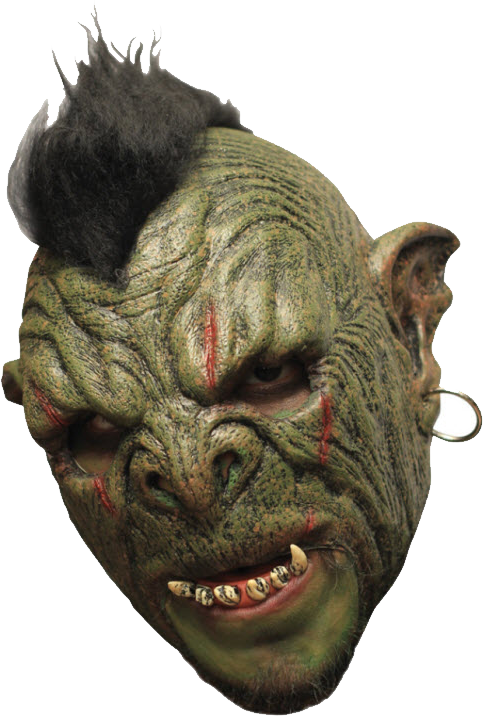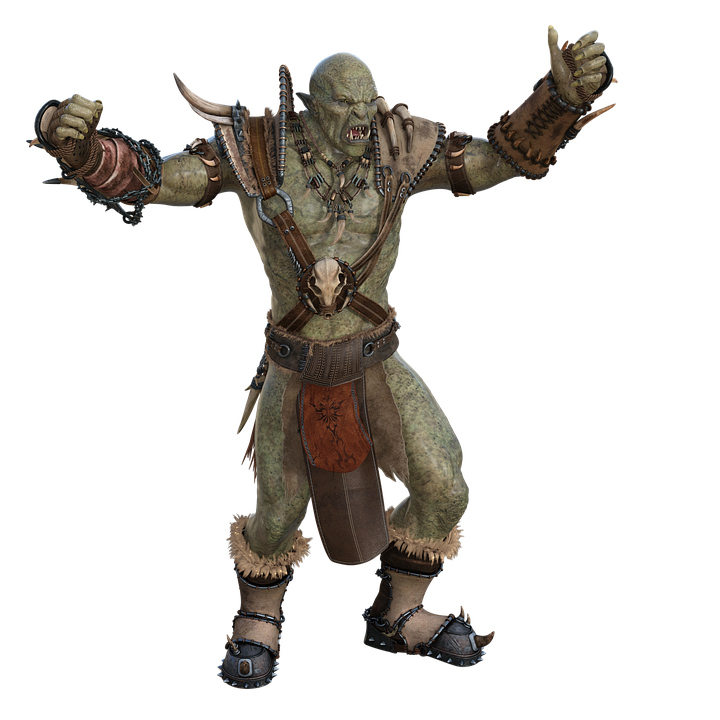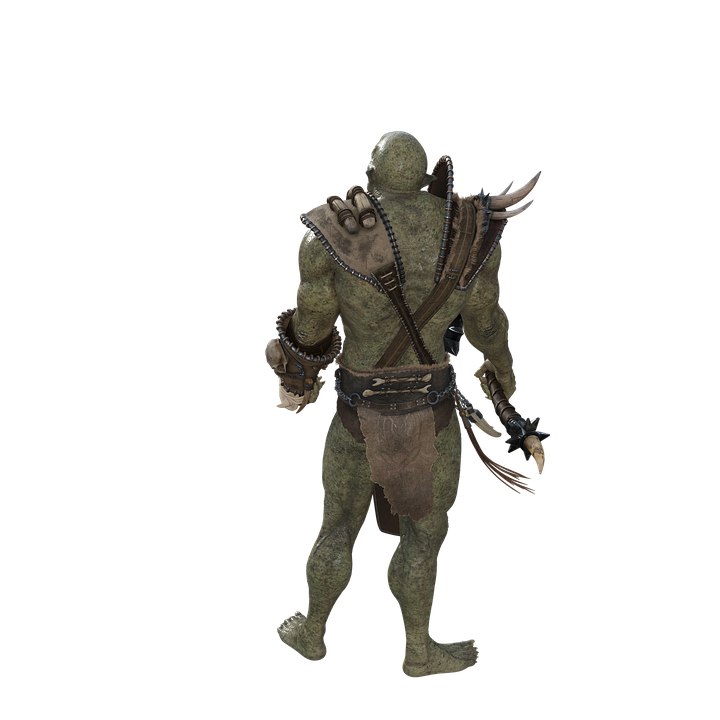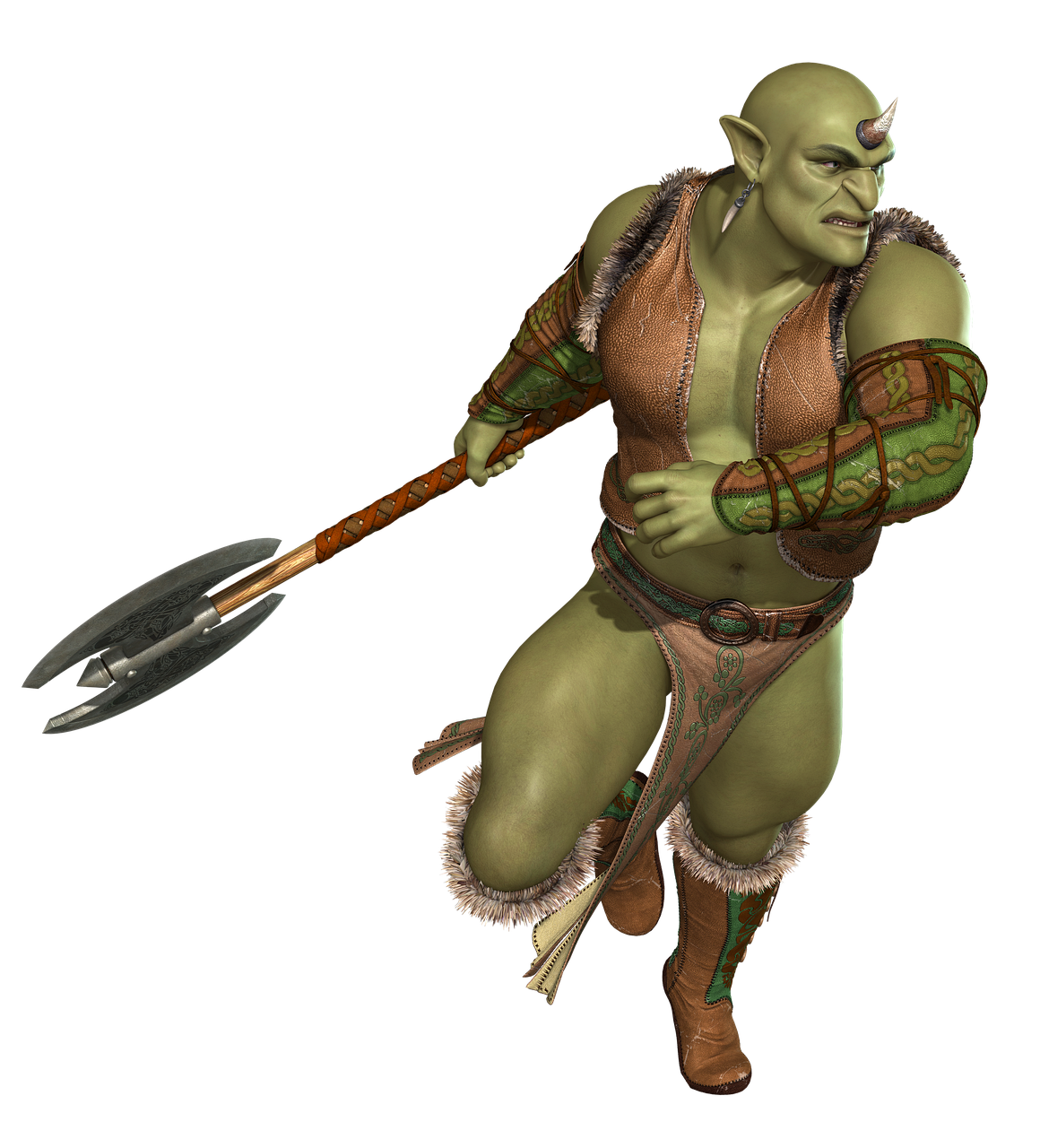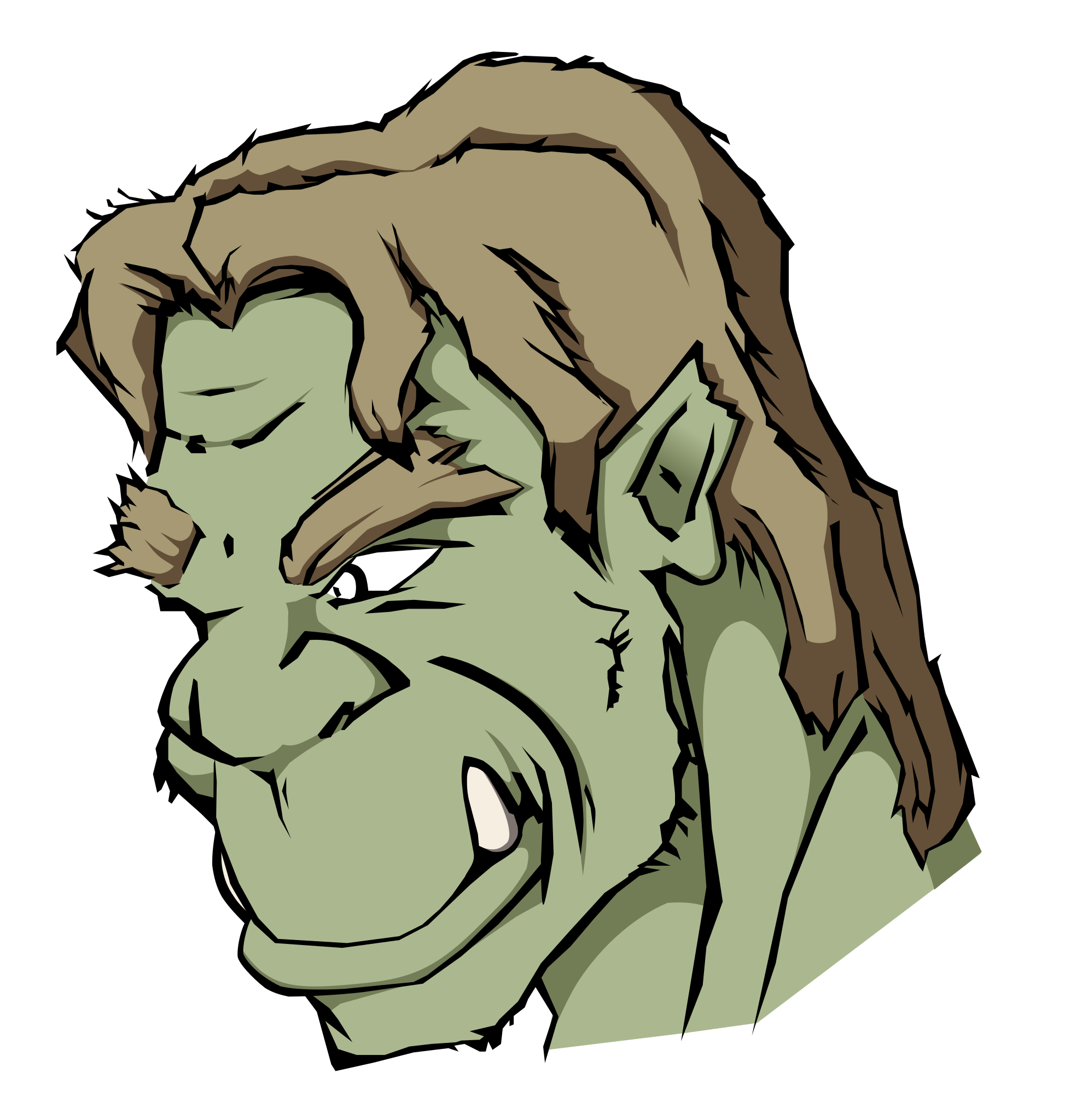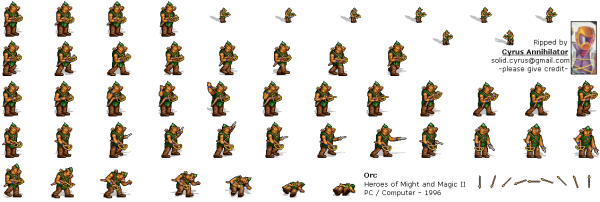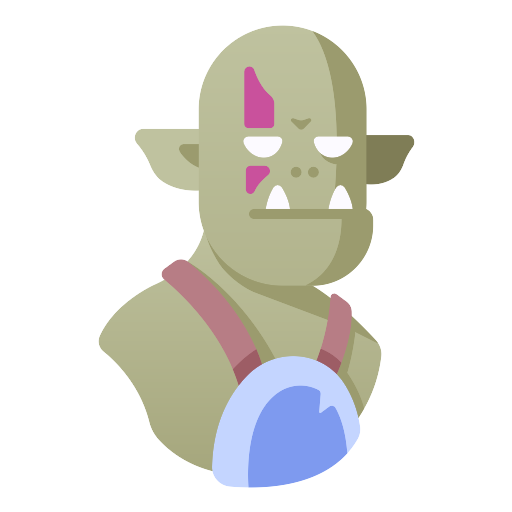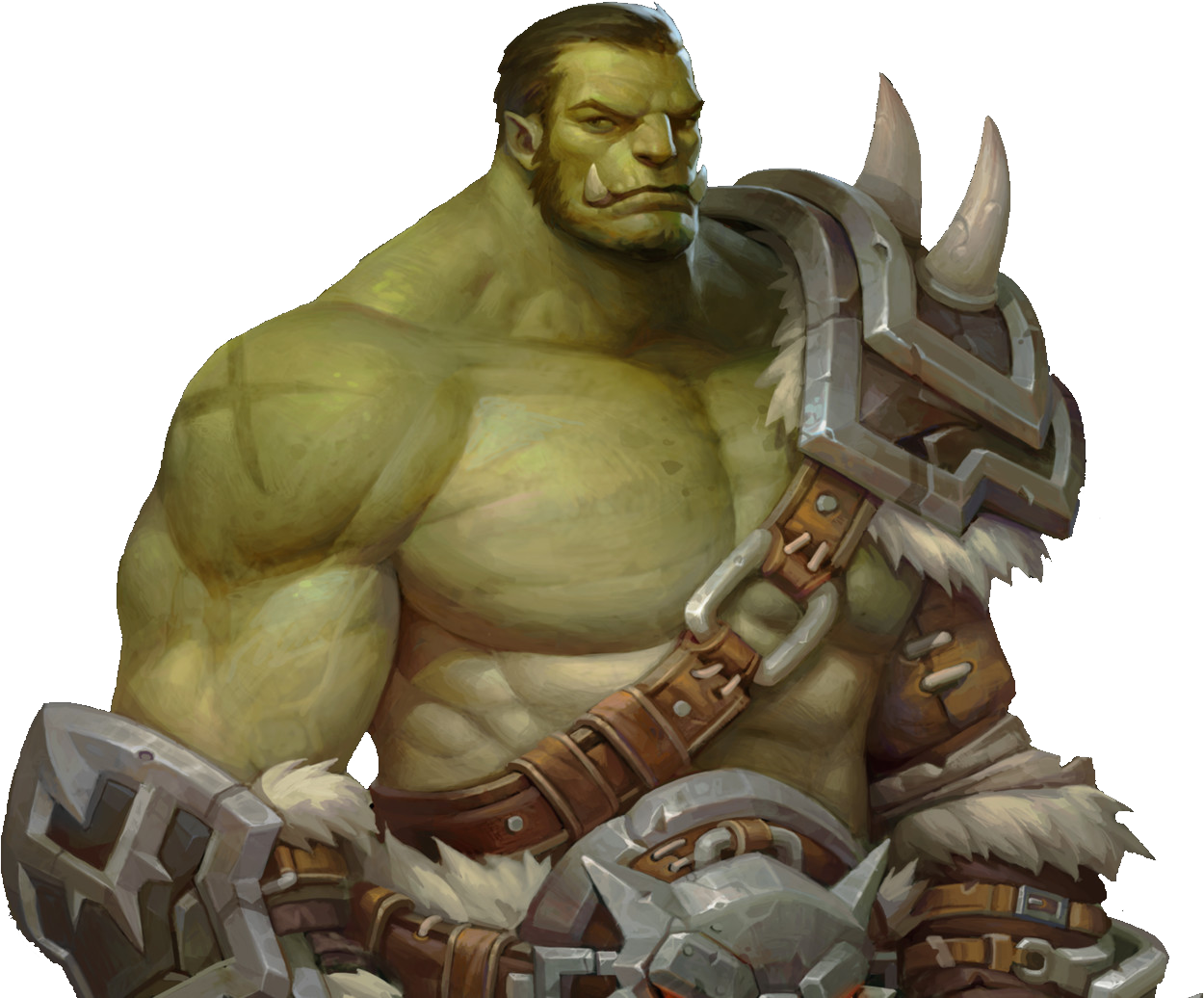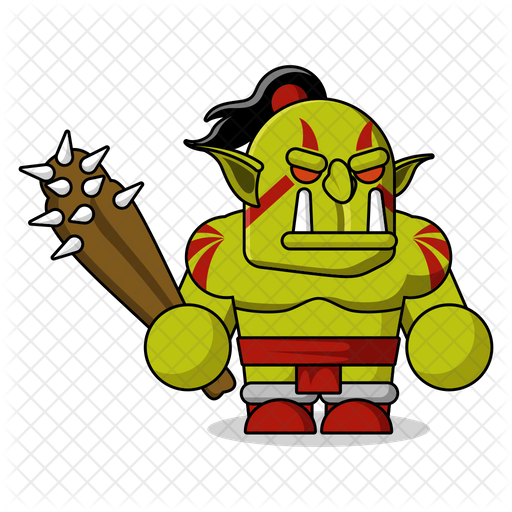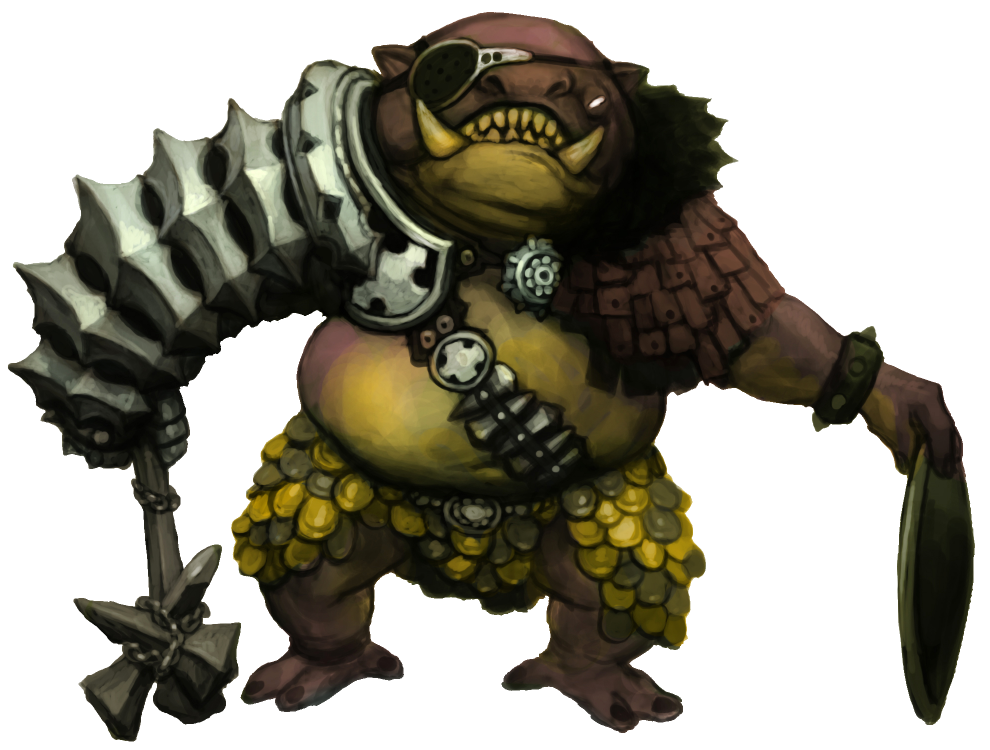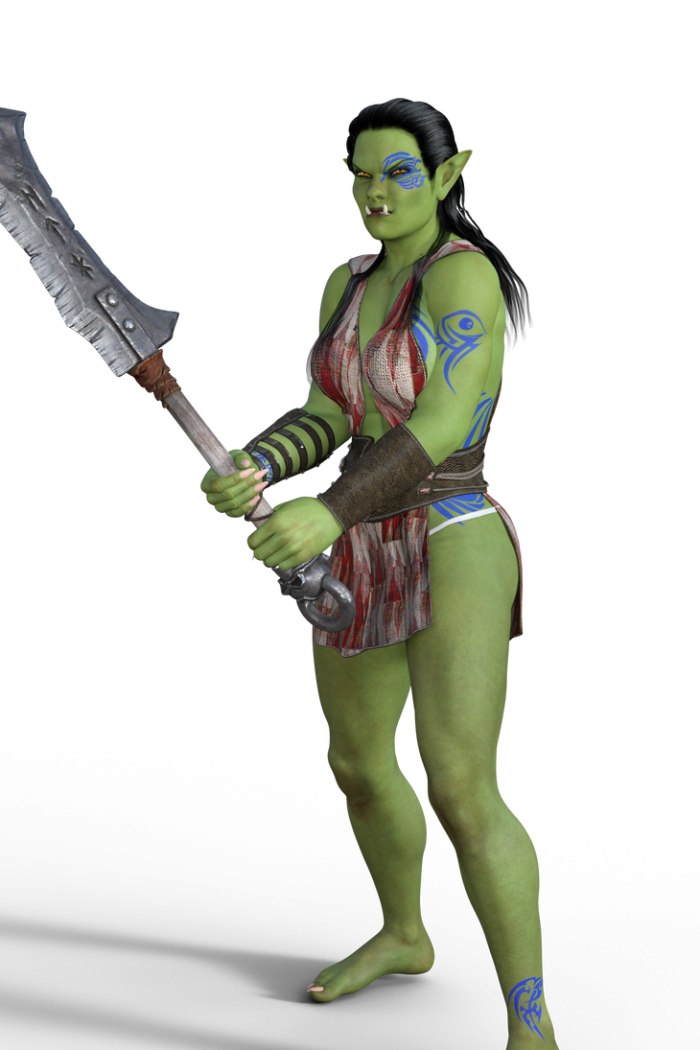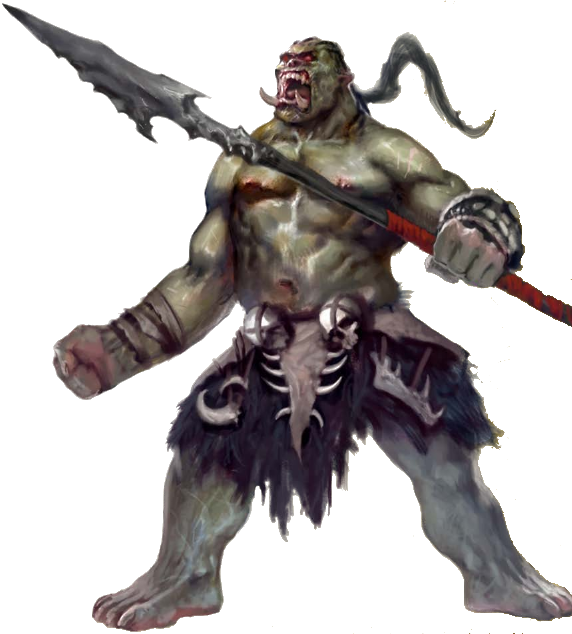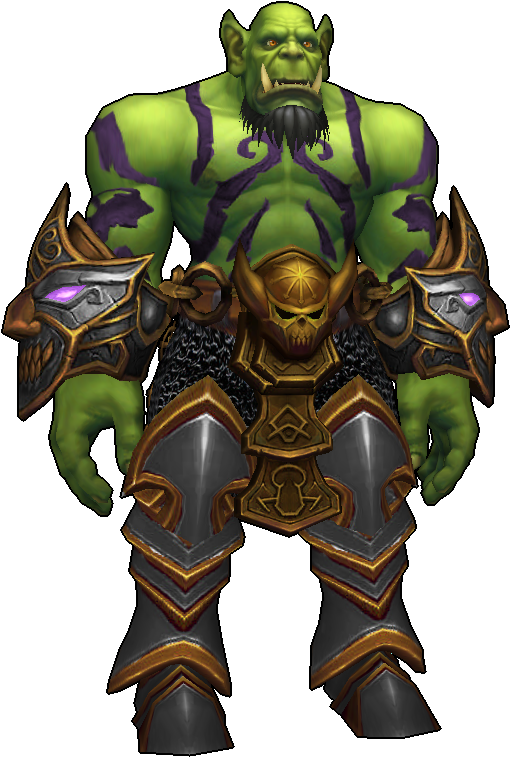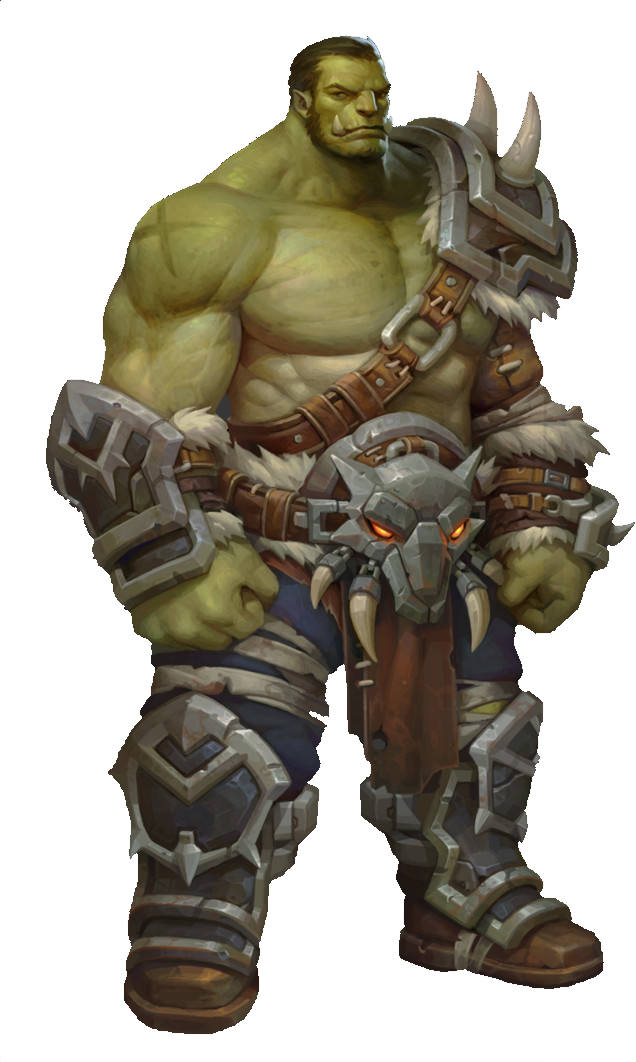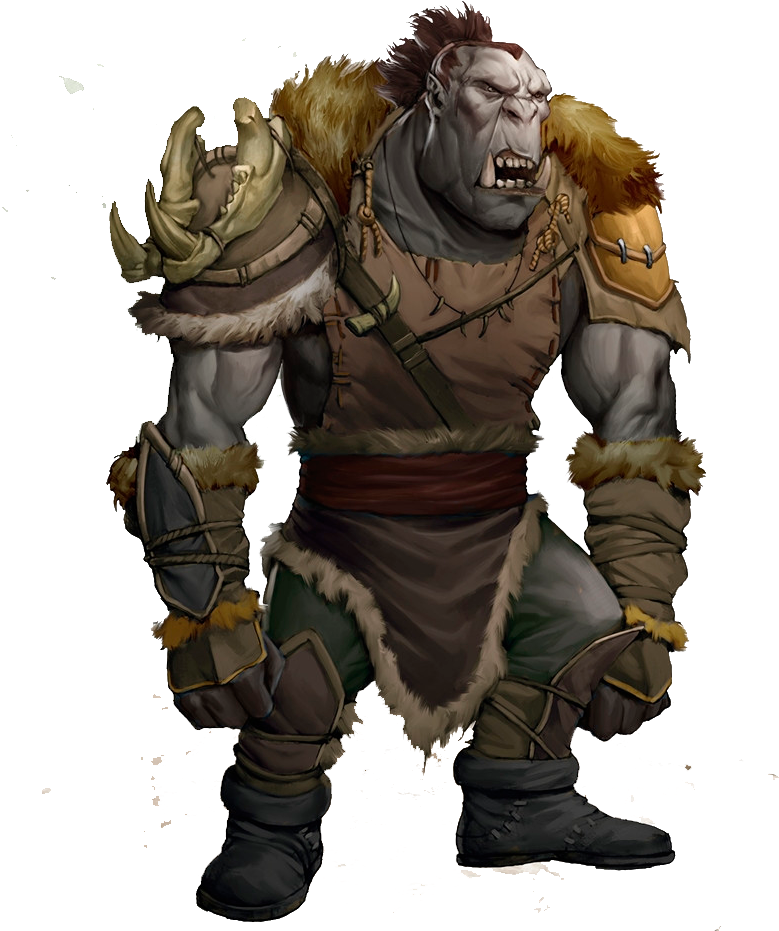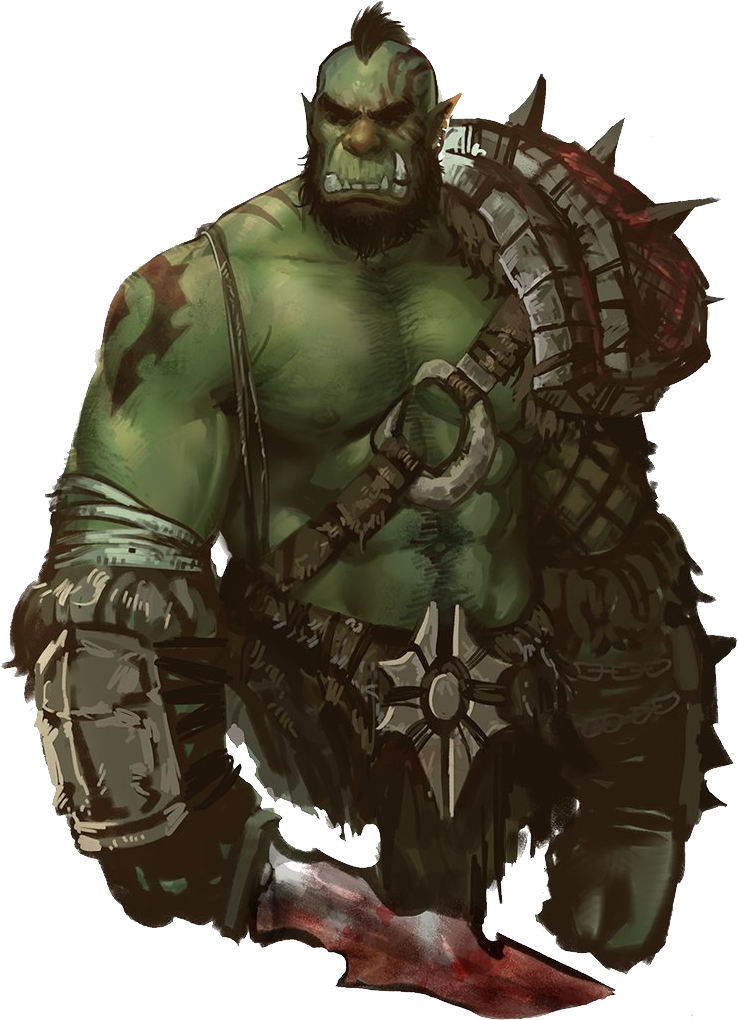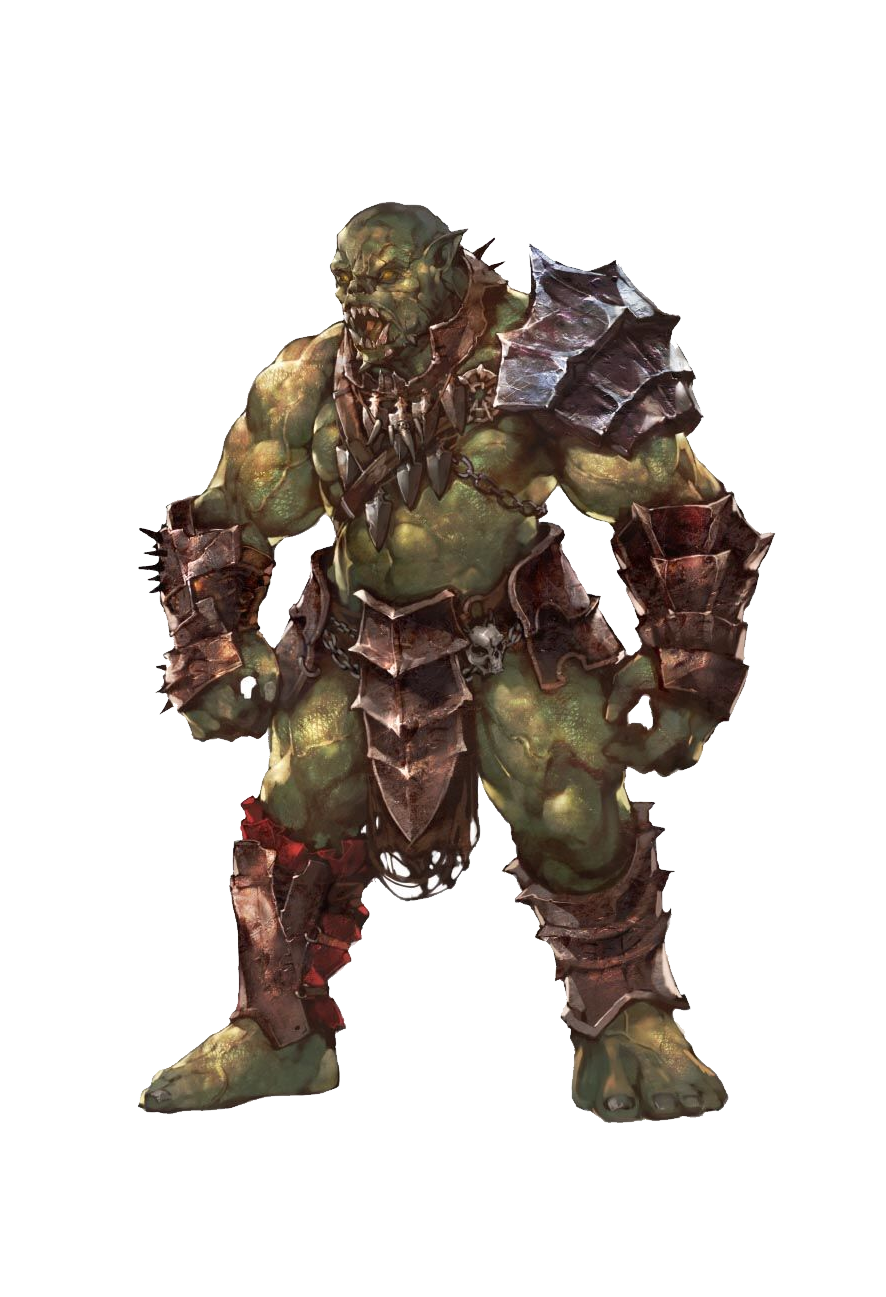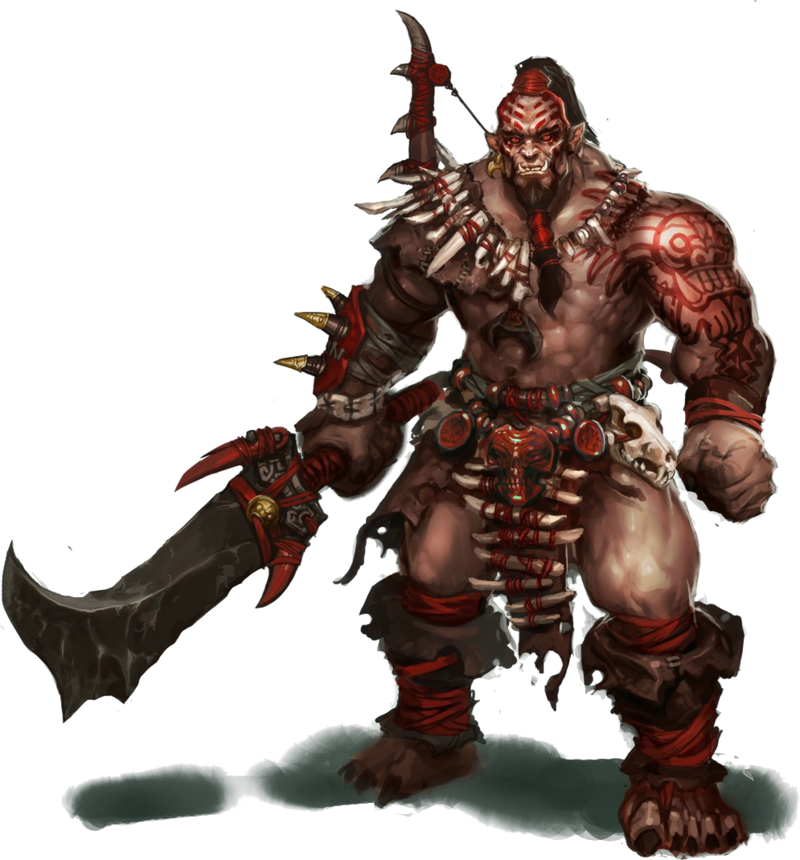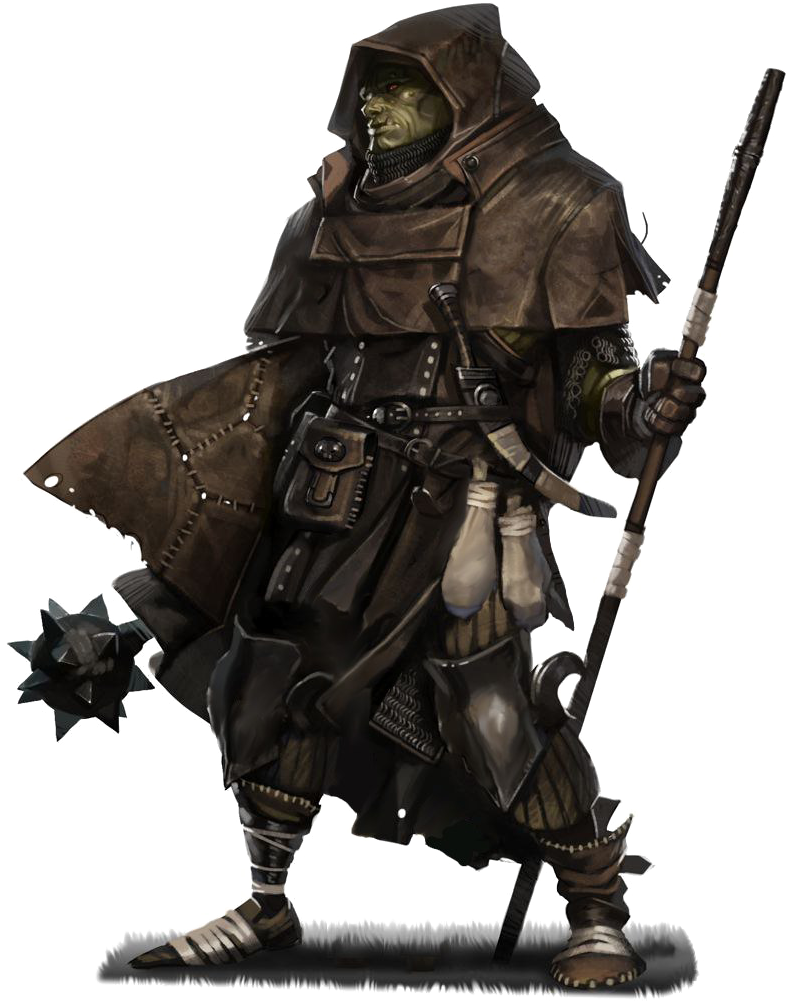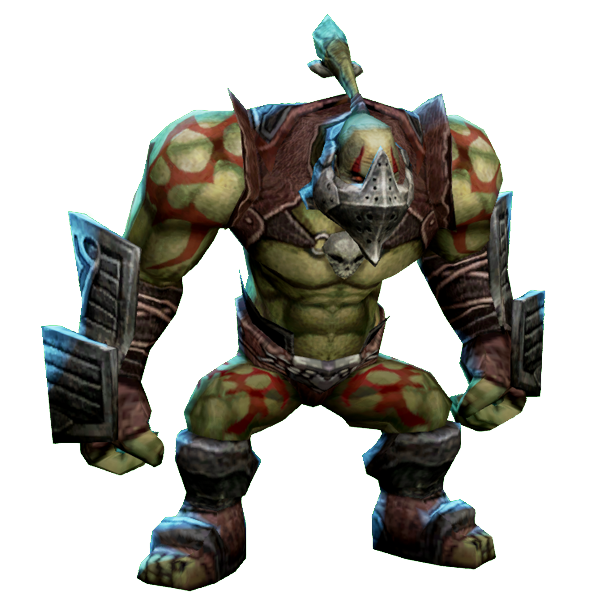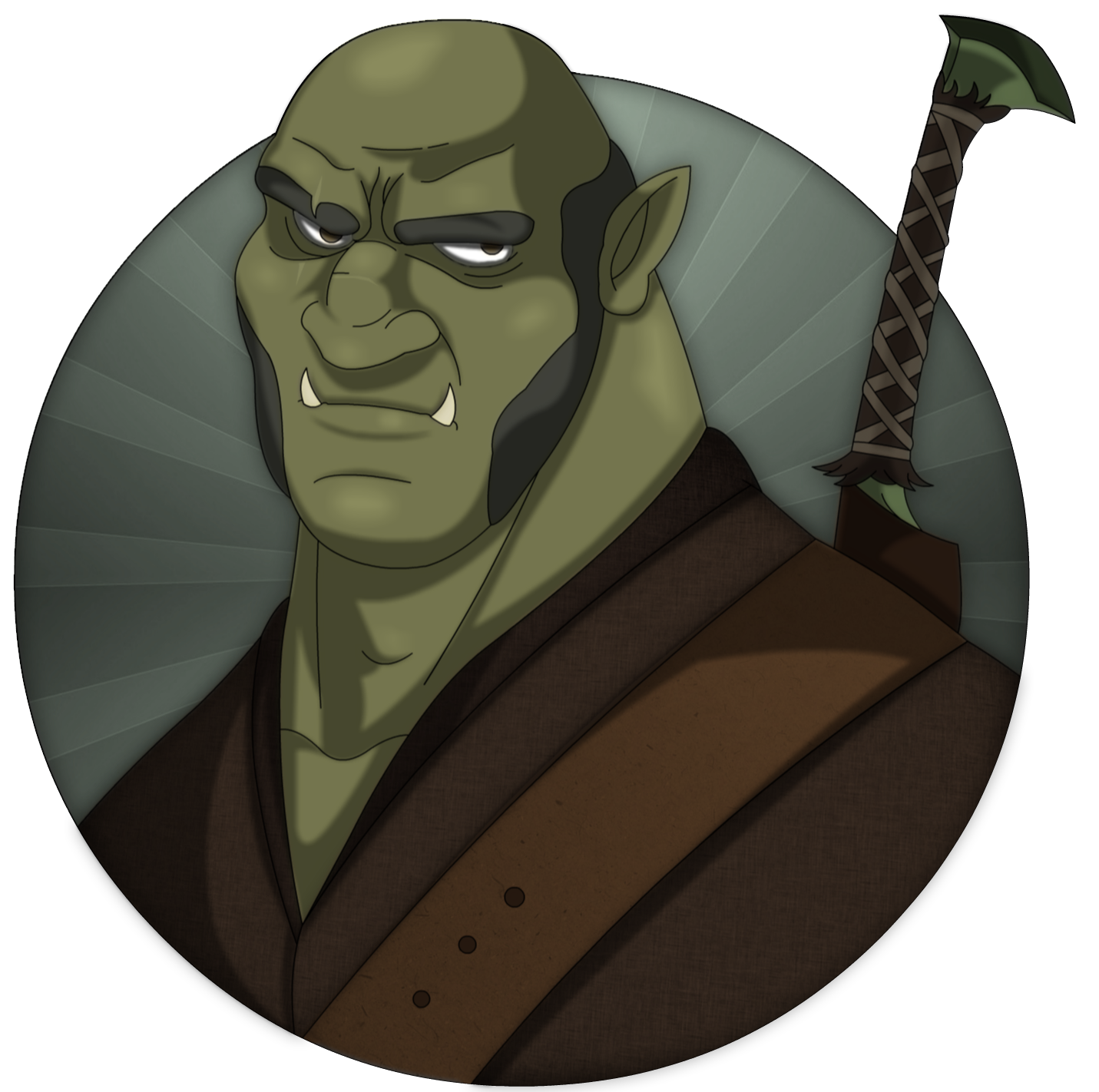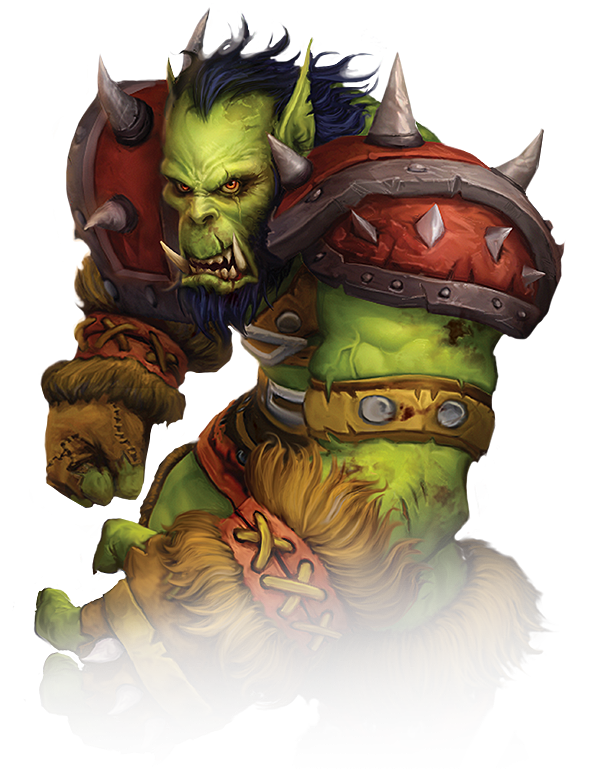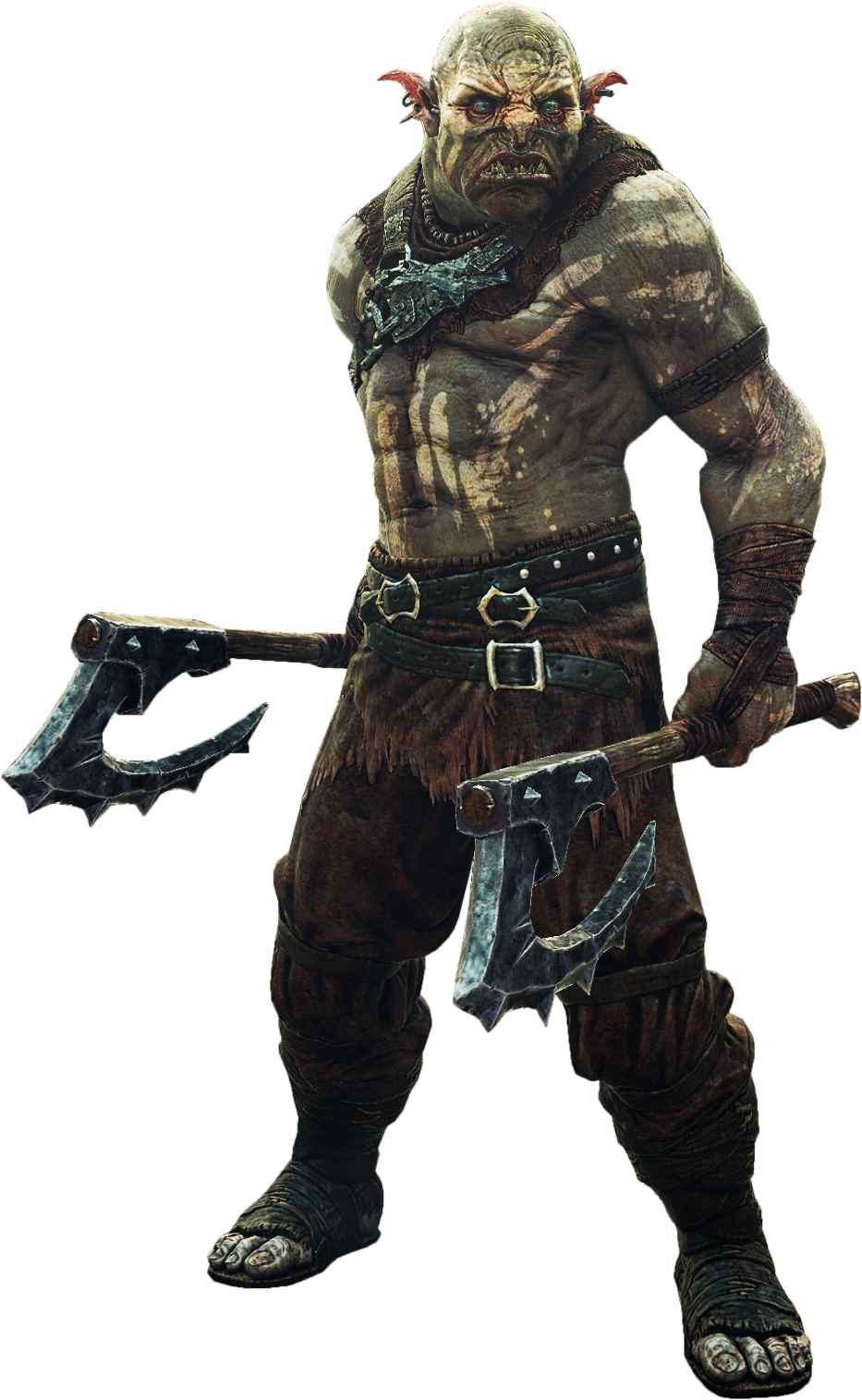Download top and best high-quality free Orc PNG Transparent Images backgrounds available in various sizes. To view the full PNG size resolution click on any of the below image thumbnail.
License Info: Creative Commons 4.0 BY-NC
An orc, like a goblin, is a fictitious humanoid creature. J. R. R. Tolkien’s fantasy books, particularly The Lord of the Rings, popularized orcs in contemporary times. Orcs are a brutish, aggressive, ugly, and malevolent race of monsters in Tolkien’s works, contrasting with the benevolent Elves and serving an evil power, though they share a human sense of morality; there is a suggestion that they are a corrupted race of elves, among several somewhat contradictory origin stories.
Mythological monsters with names that sound like “orc” may be found in Beowulf, Early Modern poetry, and Northern European folk stories and fairy tales. Tolkien said that the name was inspired by Beowulf.
Orcs have been adopted into other authors’ fantasy tales as well as role-playing and strategic games such as Dungeons & Dragons, Warhammer, and Warcraft.
Orcus is a Latin word that is glossed as “In the 10th century Old English Cleopatra Glossaries, “Orcus was the name for Pluto, the god of the infernal regions, hence we can easily understand the explanation of hel-deofol,” Thomas Wright wrote, “Orcus was the name for Pluto, the god of the infernal regions, hence we can easily understand the explanation of hel-deofol.” Orc, like thyrs, signifies phantom or goblin in Anglo-Saxon.” The Woordenboek der Nederlandsche Taal describes ork as a verslindend monster (“devouring monster”) in the closely similar Old Dutch language, and suggests a probable root in the Old Dutch nork “petulant, crabbed, wicked person.”
The word Orcneas is translated above as “evil spirits,” although its meaning is unclear. Klaeber proposed orc L. orcus “underworld” + neas “corpses,” a combination to which the translation “bad spirits” fell short. It is thought to contain the suffix -né, which is related to Gothic naus and Old Norse nár, both of which signify ‘corpse.’ The term for corpse in Old English is lc, but -né appears in nebbed ‘corpse bed’ and dryhtné ‘dead body of a warrior,’ where dryht is a military unit. If orcus ‘corpse’ is translated as Orc PNGorcné, the meaning might be “corpse from Orcus (i.e. the underworld)” or “devil-corpse,” regarded as a wandering dead creature.
In Edmund Spenser’s 1590 Faerie Queene, a creature named Orcus is referenced. In Samuel Holland’s 1656 fairy tale Don Zara del Fogo, a parody of Spanish tales such as Don Quixote, the Oxford English Dictionary mentions an Early Modern era orke, meaning “ogre.” It is thought that ‘orke’/’ogre’ entered English via continental fairy tales, particularly from the 17th-century French writer Charles Perrault, who borrowed most of his stories and developed his “ogre” from the 16th-century Italian writers Giovanni Francesco Straparola (credited with introducing the literary form of the fairy tale) and Giambattista Basile, who wrote in the Naples dialect, claiming to be passing down oral folktales from his region. Basile used huorco, huerco, or uerco, the Neapolitan variant of Italian orco, lit. “Ogre,” to represent a big, hairy, tusked, mannish beast who could talk, resided in a dark woodland or garden, and could trap and eat humans in his stories.
Download Orc PNG images transparent gallery.
- Orc PNG Images HD
Resolution: 1920 × 1080
Size: 813 KB
Image Format: .png
Download
- Orc Monster PNG Photo
Resolution: 1081 × 2277
Size: 2088 KB
Image Format: .png
Download
- Orc PNG Free Image
Resolution: 885 × 903
Size: 341 KB
Image Format: .png
Download
- Orc Monster PNG Cutout
Resolution: 1000 × 834
Size: 422 KB
Image Format: .png
Download
- Orc PNG
Resolution: 3700 × 3958
Size: 1093 KB
Image Format: .png
Download
- Orc PNG Pic
Resolution: 900 × 1023
Size: 582 KB
Image Format: .png
Download
- Orc PNG File
Resolution: 777 × 492
Size: 339 KB
Image Format: .png
Download
- Warrior Orc PNG Pic
Resolution: 690 × 976
Size: 732 KB
Image Format: .png
Download
- Orc Monster PNG Images
Resolution: 918 × 960
Size: 1232 KB
Image Format: .png
Download
- Warrior Orc PNG File
Resolution: 900 × 947
Size: 863 KB
Image Format: .png
Download
- Orc Monster PNG Photos
Resolution: 1351 × 2291
Size: 3098 KB
Image Format: .png
Download
- Orc PNG Image
Resolution: 617 × 530
Size: 433 KB
Image Format: .png
Download
- Orc PNG Photo
Resolution: 483 × 716
Size: 459 KB
Image Format: .png
Download
- Warrior Orc PNG Image
Resolution: 720 × 720
Size: 364 KB
Image Format: .png
Download
- Orc Monster Transparent
Resolution: 720 × 720
Size: 228 KB
Image Format: .png
Download
- Warrior Orc PNG Photo
Resolution: 1160 × 1280
Size: 1038 KB
Image Format: .png
Download
- Orc Monster PNG Clipart
Resolution: 1947 × 2048
Size: 460 KB
Image Format: .png
Download
- Orc PNG Cutout
Resolution: 600 × 202
Size: 93 KB
Image Format: .png
Download
- Orc PNG Images
Resolution: 512 × 512
Size: 25 KB
Image Format: .png
Download
- Orc PNG Photos
Resolution: 1250 × 1036
Size: 1133 KB
Image Format: .png
Download
- Warrior Orc PNG Cutout
Resolution: 512 × 512
Size: 165 KB
Image Format: .png
Download
- Orc Monster PNG
Resolution: 990 × 750
Size: 640 KB
Image Format: .png
Download
- Orc Monster PNG Pic
Resolution: 700 × 1050
Size: 446 KB
Image Format: .png
Download
- Orc
Resolution: 572 × 634
Size: 553 KB
Image Format: .png
Download
- Orc Transparent
Resolution: 510 × 757
Size: 559 KB
Image Format: .png
Download
- Warrior Orc
Resolution: 636 × 1062
Size: 604 KB
Image Format: .png
Download
- Orc Monster
Resolution: 779 × 931
Size: 752 KB
Image Format: .png
Download
- Orc PNG Clipart
Resolution: 738 × 1020
Size: 715 KB
Image Format: .png
Download
- Orc PNG Picture
Resolution: 886 × 1297
Size: 747 KB
Image Format: .png
Download
- Orc Monster PNG File
Resolution: 800 × 860
Size: 644 KB
Image Format: .png
Download
- Orc PNG HD Image
Resolution: 793 × 1001
Size: 775 KB
Image Format: .png
Download
- Warrior Orc PNG
Resolution: 600 × 600
Size: 1409 KB
Image Format: .png
Download
- Orc Monster PNG Image
Resolution: 1431 × 1422
Size: 1140 KB
Image Format: .png
Download
- Orc PNG Image HD
Resolution: 589 × 769
Size: 727 KB
Image Format: .png
Download
- Orc No Background
Resolution: 933 × 1515
Size: 1272 KB
Image Format: .png
Download
